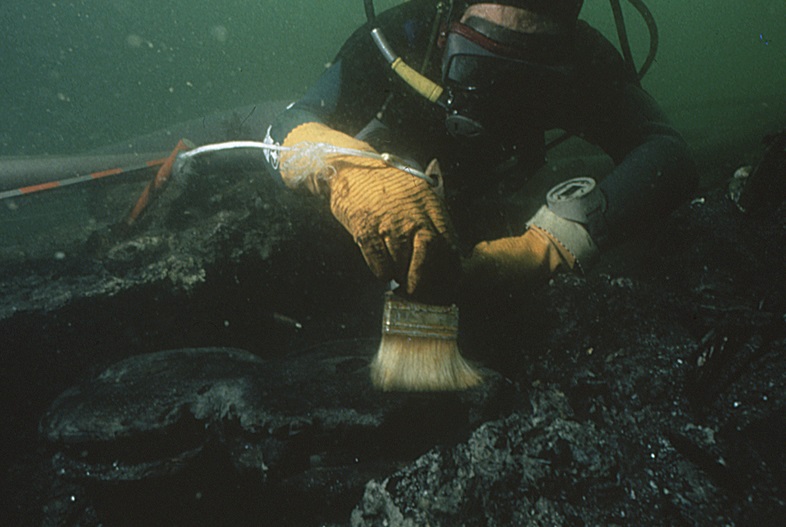A maritime museum recognised as a “Musée de France”
You can’t go to Tatihou Island without visiting this museum! You’ll learn all kinds of fascinating things about what you will have seen outside, including birds, oyster beds and boats. The maritime museum is a recognised “musée de France”, which means it develops and presents its collections in the public interest. It opened in 1992 to safeguard and showcase the fragments of boats sunk near here by the English in 1692. You’ll find a natural history gallery, a shelter for traditional pleasure crafts and fishing boats, a longliner restoration hangar and another dedicated to the island’s history. The museum’s collections bear on the fields of fine arts, archaeology on land, the natural history of the coast and maritime ethnology: the opportunity to present temporary exhibitions on an annual basis.
Permanent exhibition “Fleets & fracas, the La Hougue shipwrecks (1692)”

This chronicles one of the defining events of the island’s history: the Battle of Barfleur-La Hougue! In 1692, the French fleet of King Louis XIV clashed with Anglo-Dutch ships. By the end of this battle, the French vessels had sunk just off the coast of Tatihou Island. The shipwrecks were discovered in 1984 and the Manche Département launched a major underwater archaeological excavation campaign. The museum’s aim is to safeguard these precious fragments of history, as they tell us about shipbuilding in the 17th century and about life on board ships of the line.
This permanent exhibition displays over 200 artefacts. It delves into such themes as shipbuilding, navigation and life on board the royal vessels, through to the work of underwater archaeologists. Children can get to grips with the exhibition thanks to a trail and an activity booklet tailored especially to their age.

The boathouse
Discover vaquelottes, plates, yoles, doris or picoteux! These are all traditional fishing boats and pleasure crafts that bear witness to the shipbuilding tradition along Normandy’s coastline. They are shown according to the characteristics of their construction, location, use or the fishing trade they practised. Built between 1907 and 1974, these boats form a representative sample of the small vessels that were once used for fishing or sailing between Cherbourg and the mouth of the River Orne, demonstrating the craftsmanship of their builders and the myriad upheavals that shipbuilding developments went through during the 20th century.

The “Sainte-Thérèse-Souvenez-Vous” longliner and its hangar

In this hangar, between lofting and moulds, ship carpentry tools and fishing tackle, explore the unique history of this vessel built in Barfleur in 1948. On a secure walkway above, you can gain a higher perspective of the beams across the boat’s deck which have been completely renovated. The construction of a timber boat is explained through drawings and scale models. Horizontal, longitudinal and cross-sectional views as well as working drawings immerse you in this captivating world of shipwrights, who perpetuate a time-honoured skill.
The long-lining fishing technique entails extending into the sea, via a mainline, branchlines to which baited hooks have been attached to catch large fish on the seabed (porbeagle sharks, school sharks, small-spotted catsharks, rays and congers). Baiting, net shooting then hauling were physically demanding and sometimes dangerous.
This arduous fishing technique, entirely done by hand and environmentally friendly, reached its peak in the 1960s-1980s. Nowadays it is hardly practised anymore.
The Sainte-Thérèse-Souvenez-Vous is a symbolic vessel of the long-lining fishing technique in the Val de Saire area.
